If you are from the live streaming industry, then you must know how crucial live streaming CDNs (Content Delivery Networks) are. These networks strategically position servers worldwide to optimize content distribution, minimize latency, and enhance load balancing during live broadcasts.
Pivotal for providing a seamless viewing experience, CDNs play a significant role in reducing buffering issues and accelerating data transfer speeds. For live streaming businesses, understanding CDNs is paramount.
The choice of CDN significantly impacts live streaming performance, and businesses need to explore various options, considering factors such as features, pricing models, and global reach. The proximity of servers ensures minimal data travel distance, translating to lower latency and a consistent high-quality streaming experience.
As live streaming continues to thrive, businesses must have a clear understanding of CDNs to make the right decisions about selecting, optimizing, and leveraging these networks. Knowledge about CDN security measures is equally vital to safeguard against potential threats and protect sensitive content.
But that’s not it. There’s more that you must know about live streaming CDNs. And in this blog, we will guide you through it all. So, let’s get started!
What Is a Live Streaming CDN?
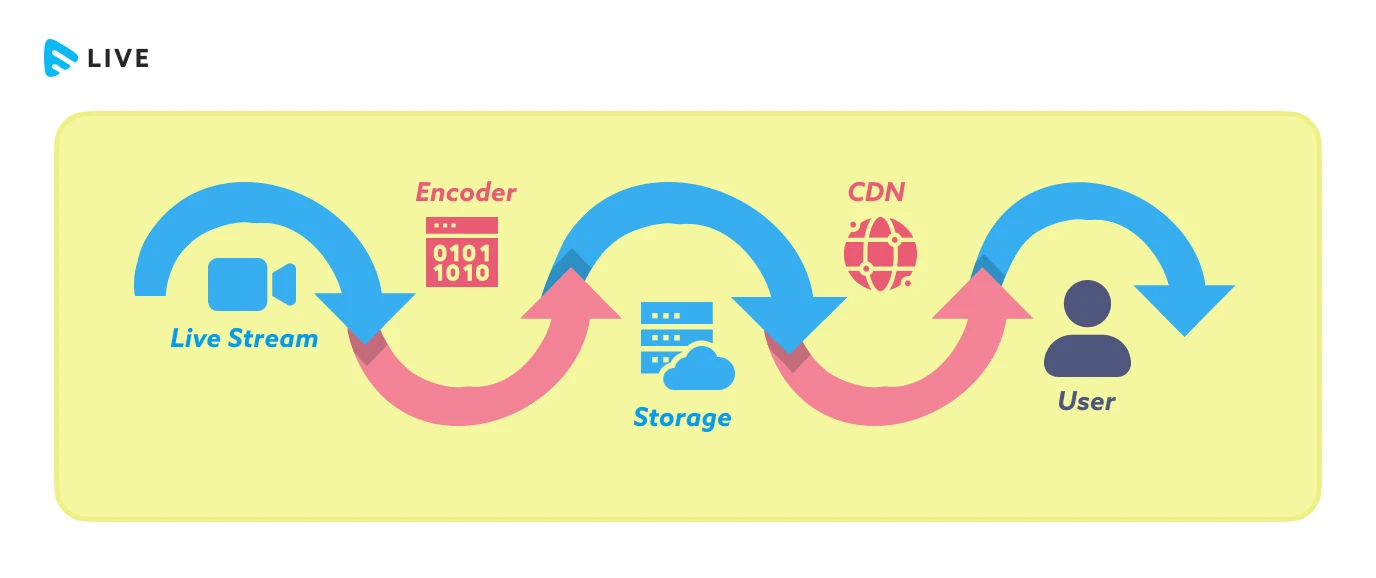
A Live Streaming Content Delivery Network (CDN) is a network of servers strategically distributed across various geographical locations to efficiently deliver live streaming content to users in real-time.
This technology is specifically designed to enhance the performance, scalability, and reliability of live video streaming by minimizing latency and optimizing the delivery of multimedia content. This distribution helps alleviate the strain on a single server and ensures that users can access the content from a server that is geographically closer to them. The proximity of the server reduces the distance the data needs to travel, minimizing latency and enhancing the overall streaming experience.
The CDN functions by caching the live streaming content on its servers, allowing for quick retrieval when a user requests the content. This caching mechanism significantly reduces the load on the origin server, which is the server where the live stream originates. By distributing the workload across multiple servers, a Live Streaming CDN can handle a large number of concurrent viewers without compromising the quality of the streaming experience.
The Importance of Live Streaming CDNs
1. Enhanced Viewer Experience
One of the primary reasons for the prominence of Live Streaming CDNs is the significant enhancement they bring to the viewer experience. Traditional streaming methods often struggle with buffering issues and latency, leading to a frustrating user experience. CDNs address these challenges by leveraging a network of strategically located servers.
When a live stream is initiated, the CDN caches the content on multiple servers across different geographical locations. This ensures that viewers can access the content from a server that is physically closer to them. As a result, the distance the data needs to travel is reduced, minimizing latency and optimizing the delivery of the live stream.
This proximity-based approach enhances the speed at which content is delivered to end-users, reducing buffering times and providing a smoother streaming experience.
2. Global Content Delivery
Live Streaming CDNs play a crucial role in making live content accessible to a diverse and widespread audience. By strategically placing servers in data centers around the world, CDNs reduce the distance between the content and the end-user, facilitating efficient and rapid content delivery on a global scale.
Without CDNs, live streaming on a global level would face significant challenges. The sheer volume of data generated by live streams requires a robust and scalable infrastructure to handle concurrent viewers from various regions. CDNs distribute this load across their network of servers, preventing congestion and ensuring that each viewer receives a reliable and high-quality stream.
This global distribution also aids in overcoming potential network bottlenecks and internet congestion. By offering multiple points of access, CDNs enable a more resilient and responsive streaming experience, even during peak usage periods. Consequently, content providers can reach audiences worldwide without compromising on quality, fostering a more inclusive and engaging digital environment.
3. Low Latency Streaming
Low latency live streaming is a critical factor in live streaming, especially for content that demands real-time interaction, such as live sports events or gaming broadcasts. Latency refers to the delay between the moment content is generated and when it reaches the viewer. Live Streaming CDNs are engineered to minimize latency, providing a near-instantaneous delivery of live content.
The reduction of latency is achieved through the strategic placement of servers and the optimization of data transfer protocols. As mentioned earlier, CDNs cache live streaming content on servers located closer to the end-users. This proximity significantly reduces the time it takes for data to travel, resulting in lower latency and a more responsive streaming experience.
Furthermore, Live Streaming CDNs employ advanced streaming protocols and technologies designed specifically for low-latency delivery. These include WebRTC (Web Real-Time Communication) and HTTP/2, which enable faster and more efficient communication between servers and clients. By adopting these protocols, CDNs contribute to a more immersive and interactive live streaming experience, allowing viewers to engage with content in real-time.
4. Scalable Infrastructure
A scalable infrastructure ensures that a system can grow and adapt to changing demands without compromising performance or reliability. In the context of content delivery, scalability is paramount for handling increasing amounts of data, accommodating a growing user base, and seamlessly integrating new technologies.
Scalable infrastructure is characterized by its ability to efficiently allocate resources, whether it be processing power, storage, or network bandwidth, in response to changing demand patterns. Cloud computing, with its elastic and on-demand resources, has become pivotal in achieving scalability for content delivery systems.
Leveraging cloud services allows businesses to scale up or down based on real-time requirements, ensuring optimal performance during peak usage periods and cost-effectiveness during quieter intervals.
The advantages of a scalable infrastructure extend beyond performance. It also fosters innovation by providing a flexible environment for experimenting with new features, services, or content formats.
5. Secure Content Distribution
Protecting intellectual property, user data, and ensuring the integrity of the content being delivered are central to building trust in digital platforms. Implementing robust encryption protocols ensures that the data being transmitted—from the content itself to user interactions—is protected from unauthorized access. This is particularly crucial for premium content, such as pay-per-view events or exclusive releases, where protecting against piracy and unauthorized access is a top priority.
Beyond encryption, secure content distribution involves implementing access controls, authentication mechanisms, and regular security audits. Access controls ensure that only authorized users can access certain content, while strong authentication mechanisms, such as two-factor authentication, add an extra layer of security to user accounts.
The Main Components of a Live Streaming CDN
1. Edge Servers
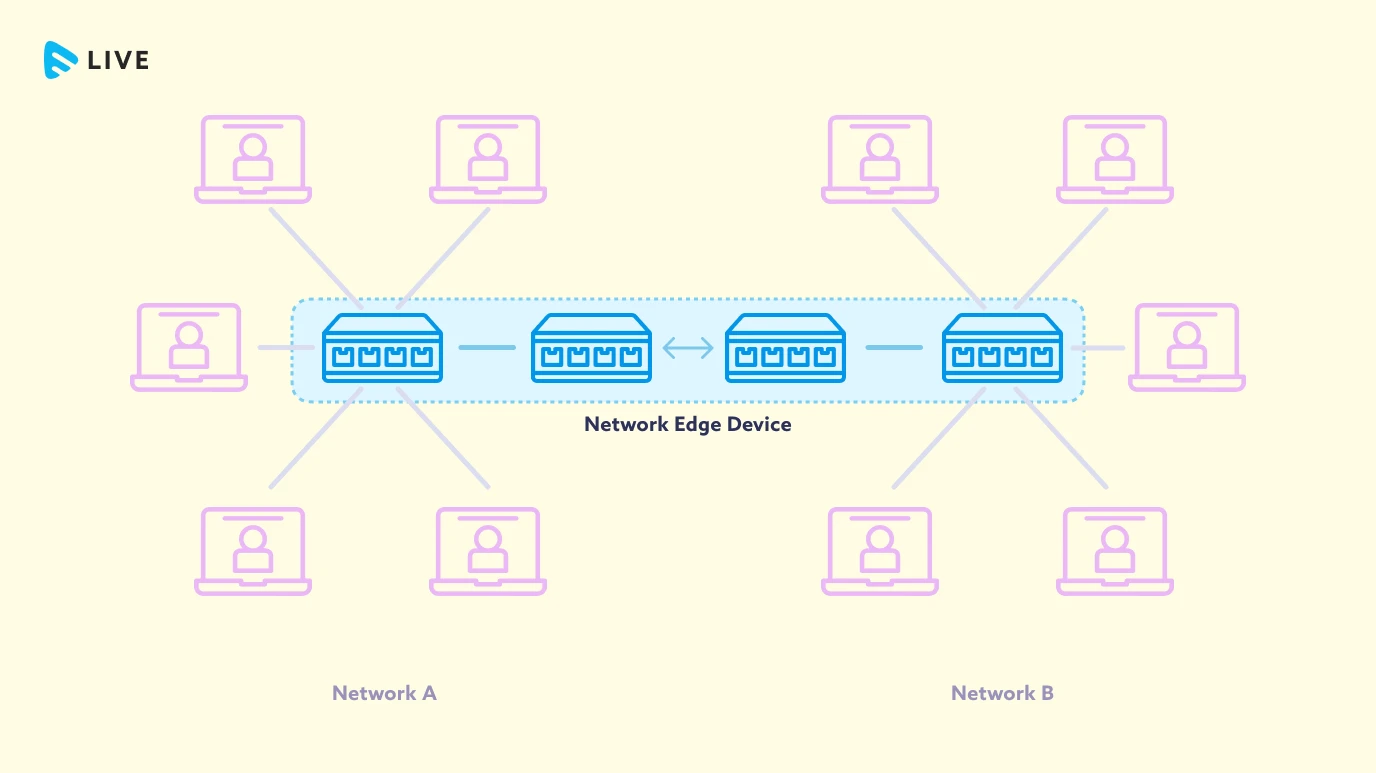
Edge servers are strategically positioned servers located at the edge of a network, closer to the end-users. Their primary function is to cache and deliver content, reducing latency and enhancing the overall streaming experience. These servers act as the frontline warriors in the battle against buffering and slow loading times.
- Geographical Distribution: The effectiveness of edge servers lies in their geographic distribution. CDNs deploy these servers in various locations worldwide, ensuring that the content is cached and delivered from a server that is physically close to the end-user. This geographical proximity minimizes the distance data needs to travel, reducing latency and optimizing content delivery.
- Caching Mechanism: Edge servers employ a caching mechanism to store copies of the live streaming content. When a user requests a particular piece of content, the edge server checks if it already has a cached copy. If present, the content is delivered directly from the server, significantly reducing the load on the origin server and accelerating the delivery process.
- Content Purging: To ensure the freshness and accuracy of content, edge servers implement content purging mechanisms. This involves periodically updating or removing cached content to reflect any changes or updates made to the live stream. Content purging helps maintain the integrity of the streaming experience and ensures users receive the most recent content.
2. Load Balancers
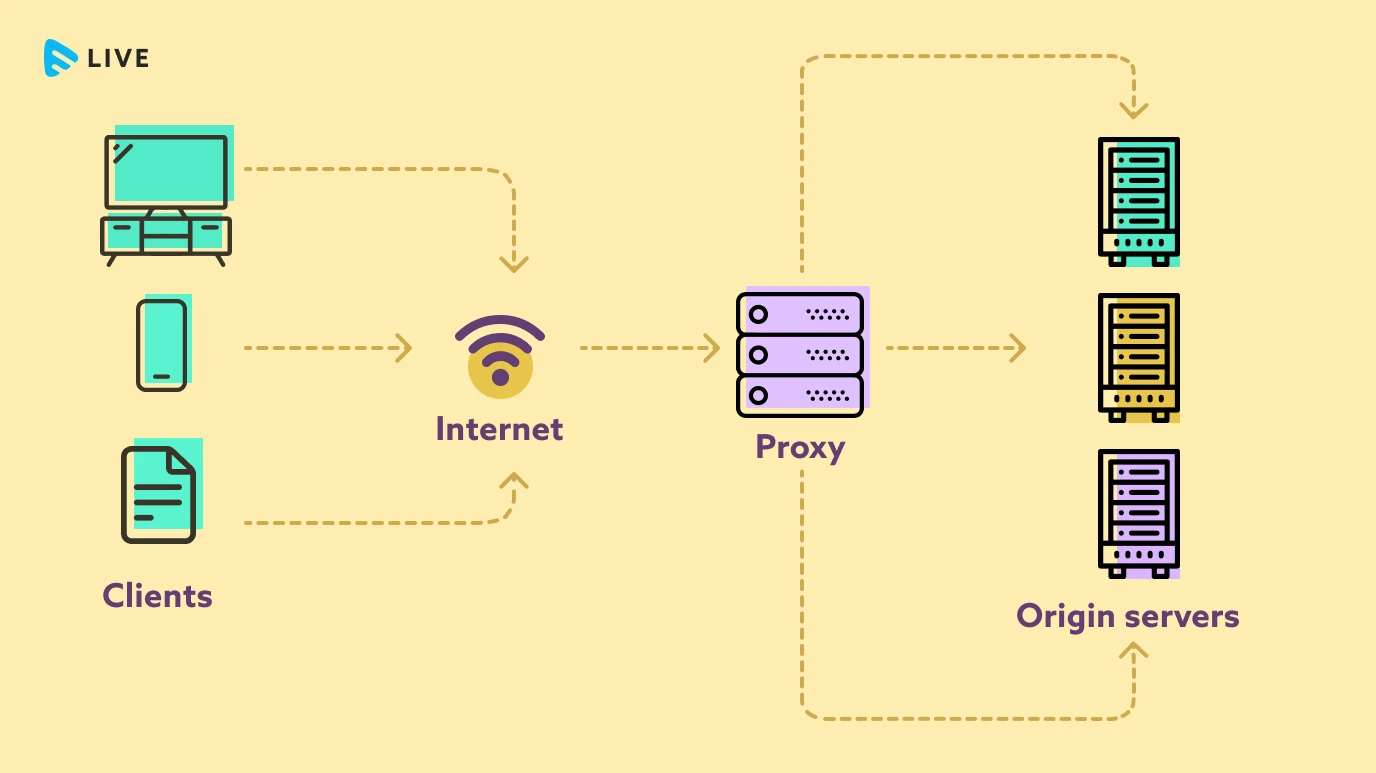
Load balancers serve as the traffic conductors within a CDN, distributing incoming requests across multiple servers to optimize resource utilization and prevent server overload. Their role is pivotal in ensuring that no single server bears an undue burden, promoting efficient content delivery and enhancing the overall system’s scalability.
- Distribution Algorithms: Load balancers utilize distribution algorithms to determine how incoming requests are allocated among the available servers. Common algorithms include Round Robin, Least Connections, and Weighted Round Robin. These algorithms consider factors like server load, response times, and available resources to intelligently route traffic.
- Health Monitoring: Load balancers continuously monitor the health and performance of individual servers. If a server becomes unresponsive or experiences issues, the load balancer can dynamically adjust the distribution of traffic, directing requests away from the problematic server to maintain seamless content delivery.
- Session Persistence: For scenarios where maintaining session state is crucial, load balancers can implement session persistence. This ensures that subsequent requests from a user are directed to the same server, maintaining the continuity of user sessions. This is particularly important for live streaming applications where a consistent viewing experience is paramount.
3. Content Delivery Nodes
Content Delivery Nodes are the backbone of a Live Streaming CDN, encompassing the network infrastructure responsible for distributing content globally. These nodes serve as the intermediate layers between edge servers and the origin server, efficiently managing the flow of content and ensuring its rapid and reliable delivery to end-users.
- Global Distribution: Content Delivery Nodes are strategically placed in data centers across the globe, forming a distributed network. This global distribution is essential for reducing the physical distance between end-users and content, minimizing latency and optimizing the overall speed of content delivery.
- Anycast Technology: Many CDNs leverage Anycast technology for routing traffic to the nearest Content Delivery Node. Anycast allows multiple nodes to share the same IP address, and the network infrastructure directs users to the nearest node based on their geographical location. This technology enhances the efficiency of content delivery by automatically directing users to the closest available node.
- Origin Shield: To further enhance reliability and reduce the load on the origin server, CDNs implement an Origin Shield. This is a designated node or set of nodes that act as a buffer between edge servers and the origin server. The Origin Shield caches content from the origin server, and edge servers pull content from the shield, reducing the direct load on the origin server and improving overall system efficiency.
4. Origin Servers
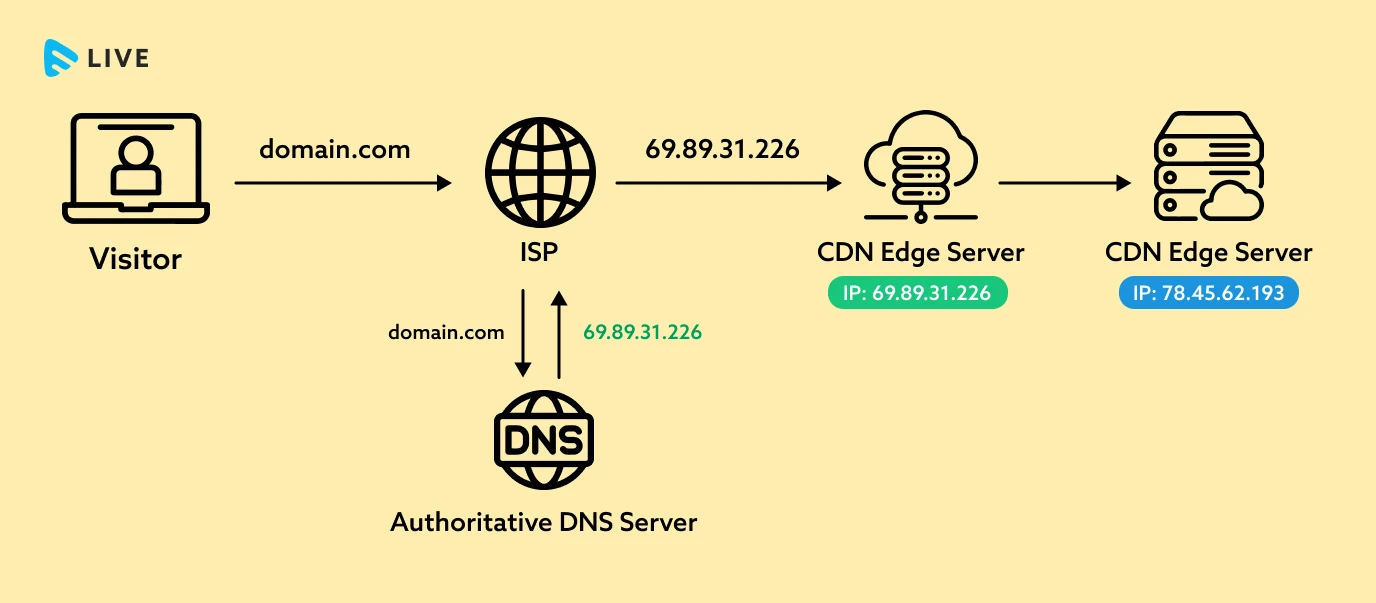
Origin servers are the initial point where live streaming content is generated, stored, and managed. The primary function of origin servers is to house the master copies of the content, serving as the authoritative source from which all distribution begins. Origin servers play a crucial role in both on-demand and live streaming scenarios.
- Content Ingestion: Origin servers are responsible for receiving and ingesting the live streaming content. This process involves capturing the video or audio feed, encoding it into various quality levels, and preparing it for distribution. Content providers often use specialized software or hardware encoders to ensure the content is in a format suitable for streaming.
- Content Storage: The content ingested by origin servers is stored in various formats and bitrates. Storage solutions range from traditional hard drives to more modern scalable cloud storage. Efficient storage management is critical for quick retrieval and distribution, especially in scenarios where high concurrency and real-time access are paramount.
- Dynamic Packaging: To accommodate the diverse array of devices and network conditions among end-users, origin servers often implement dynamic packaging. This involves creating multiple versions of the same content in different formats and bitrates, allowing the CDN to deliver the most suitable version based on the viewer’s device and internet connection speed.
5. Content Caching Systems
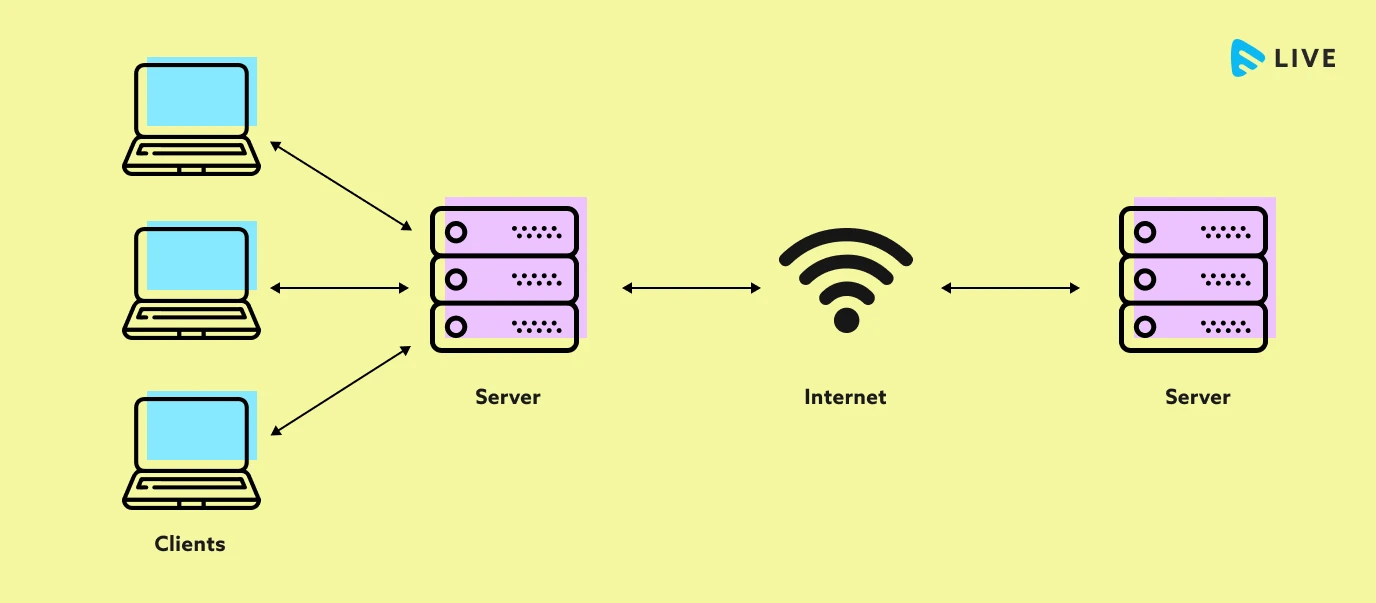
Content caching systems are the workhorses that elevate the efficiency of content delivery in a CDN. These systems store copies of the content closer to the end-users, reducing latency and accelerating the retrieval process. By strategically placing caches in various locations, CDNs ensure that users receive content from a server geographically proximate to them, fostering a seamless streaming experience.
- Cache Invalidation: To maintain the accuracy and relevance of the content, caching systems employ cache invalidation mechanisms. When the content on the origin server is updated or changed, the CDN triggers cache invalidation, ensuring that the outdated content is removed from the cache. This mechanism prevents users from accessing stale or incorrect content.
- Time-to-Live (TTL): Content caching systems implement Time-to-Live values to determine how long content should be stored in the cache before being refreshed. TTL is a critical parameter that balances the need for content freshness with the desire to minimize the load on origin servers. A shorter TTL ensures more up-to-date content but may increase the load on the origin server, while a longer TTL reduces the load on the origin server but may result in delivering slightly outdated content.
- Adaptive Bitrate Streaming (ABR): Caching systems play a pivotal role in supporting Adaptive Bitrate Streaming (ABR). ABR adjusts the quality of the stream based on the viewer’s internet connection speed and device capabilities. Caches store multiple versions of the content at different bitrates, enabling the CDN to dynamically switch between versions during playback, ensuring a smooth streaming experience even in varying network conditions.
How Does a Live Streaming CDN Work?
1. Content Ingestion
Content ingestion marks the beginning of the journey for live streaming content, transforming real-world events into digital streams ready for distribution.
- Encoding and Compression: The live video or audio feed is captured and undergoes encoding, a process where it is transformed into digital formats suitable for streaming. Compression algorithms are then applied to reduce the size of the data without compromising quality, ensuring efficient storage and transmission.
- Packaging for Streaming: The encoded content is further packaged for streaming. This involves creating different versions of the content at various quality levels and bitrates, allowing the CDN to adapt the stream quality based on the viewer’s device and network conditions. Common streaming formats include HLS (HTTP Live Streaming) and MPEG-DASH (Dynamic Adaptive Streaming over HTTP).
- Origin Server Storage: The packaged content is stored on the origin server. Origin servers act as the authoritative source, housing the master copies of the live streaming content. The stored content includes multiple quality levels, ensuring flexibility in delivery based on viewer preferences and network capabilities.
2. Edge Server Distribution
Once the content is ingested and packaged, the next critical step is its distribution to edge servers strategically positioned across the globe. The geographical proximity of edge servers to end-users is fundamental to reducing latency and optimizing the delivery of live streams.
- Global Network of Edge Servers: CDNs deploy a network of edge servers in data centers worldwide. These edge servers serve as distribution points for the live streaming content. The global distribution ensures that content is stored closer to end-users, minimizing the distance data needs to travel and reducing latency.
- Content Caching: Edge servers employ content caching, storing copies of the live streaming content locally. Caching enables rapid retrieval of content for subsequent requests from nearby viewers. Popular or frequently requested content is more likely to be cached on edge servers, enhancing overall system efficiency.
3. Request Routing
As viewers initiate requests for live streaming content, the CDN must intelligently route those requests to the most suitable edge server. Request routing is a dynamic process that optimizes the path between the viewer and the content, ensuring efficient and low-latency delivery.
- Anycast Technology: Many CDNs leverage Anycast technology to route requests to the nearest edge server. Anycast allows multiple edge servers to share the same IP address. When a user initiates a request, the network routes it to the geographically closest edge server, minimizing the time it takes for the request to reach its destination.
- Load Balancing: Request routing involves load balancing algorithms that distribute incoming requests across multiple edge servers. Load balancing ensures that no single server becomes overloaded, optimizing resource utilization and maintaining a responsive streaming experience for all viewers.
4. Dynamic Content Adaptation
The diversity of viewer devices, network conditions, and preferences necessitates the dynamic adaptation of live streaming content. This ensures that each viewer receives an optimized stream based on their specific context.
- Adaptive Bitrate Streaming (ABR): ABR is a key technology in dynamic content adaptation. It allows the CDN to dynamically adjust the quality of the stream based on the viewer’s internet connection speed and device capabilities. Different versions of the content at varying bitrates are stored on the edge servers, and the CDN switches between these versions seamlessly during playback.
- Real-time Transcoding: To accommodate a wide range of devices and playback capabilities, CDNs often employ real-time transcoding. Transcoding involves converting the live stream into different formats and bitrates on-the-fly, allowing the CDN to deliver the most suitable version to each viewer without requiring multiple pre-packaged copies.
5. Viewer Content Retrieval
As viewers receive optimized streams based on their device and network conditions, the final piece of the puzzle is the retrieval of content for seamless playback. Viewer content retrieval involves the process of delivering the adapted live stream to the end-user’s device.
- Content Pull from Edge Servers: When a viewer initiates a request to watch a live stream, the CDN pulls the content from the nearest edge server with a cached copy. The proximity of the edge server reduces the latency, ensuring a swift response and minimizing buffering times.
- Persistent Connections: To enhance the speed of content retrieval, CDNs often use persistent connections. This involves keeping the communication channel open between the viewer’s device and the edge server, allowing for the efficient transfer of content chunks without the need to repeatedly establish new connections for each piece of data.
- Buffering and Playback: As the content is retrieved, a buffer is filled on the viewer’s device to ensure a continuous and smooth playback experience. The buffer allows for temporary network fluctuations without interrupting playback. Adaptive bitrate streaming continues to dynamically adjust the stream quality based on real-time network conditions during playback.
The Bottom Line
Undoubtedly, a robust live streaming CDN is indispensable for live streaming. As the demand for high-quality live streaming content keeps spiking, the importance of a robust CDN becomes even more pronounced. It serves as the backbone of the digital infrastructure, seamlessly scaling to meet the surges in viewership, maintaining content freshness, and navigating the complexities of diverse network environments.
Live streaming CDNs transform live streaming from a mere broadcast into a dynamic, interactive, and accessible digital experience. It ensures that viewers can engage with content in real-time, transcending geographical boundaries and device limitations.
The role of a robust CDN in shaping the landscape of live streaming remains pivotal, promising a world where seamless live streaming experience is just a click away for audiences around the globe.
Are you looking for a competitive solution for seamless live streaming? Start for free with Muvi Live, a top-notch live streaming platform that lets you go live instantly, and offers a bunch of market-driven features—-robust CDN to all-in-one DRM-enabled live streaming, and many more!

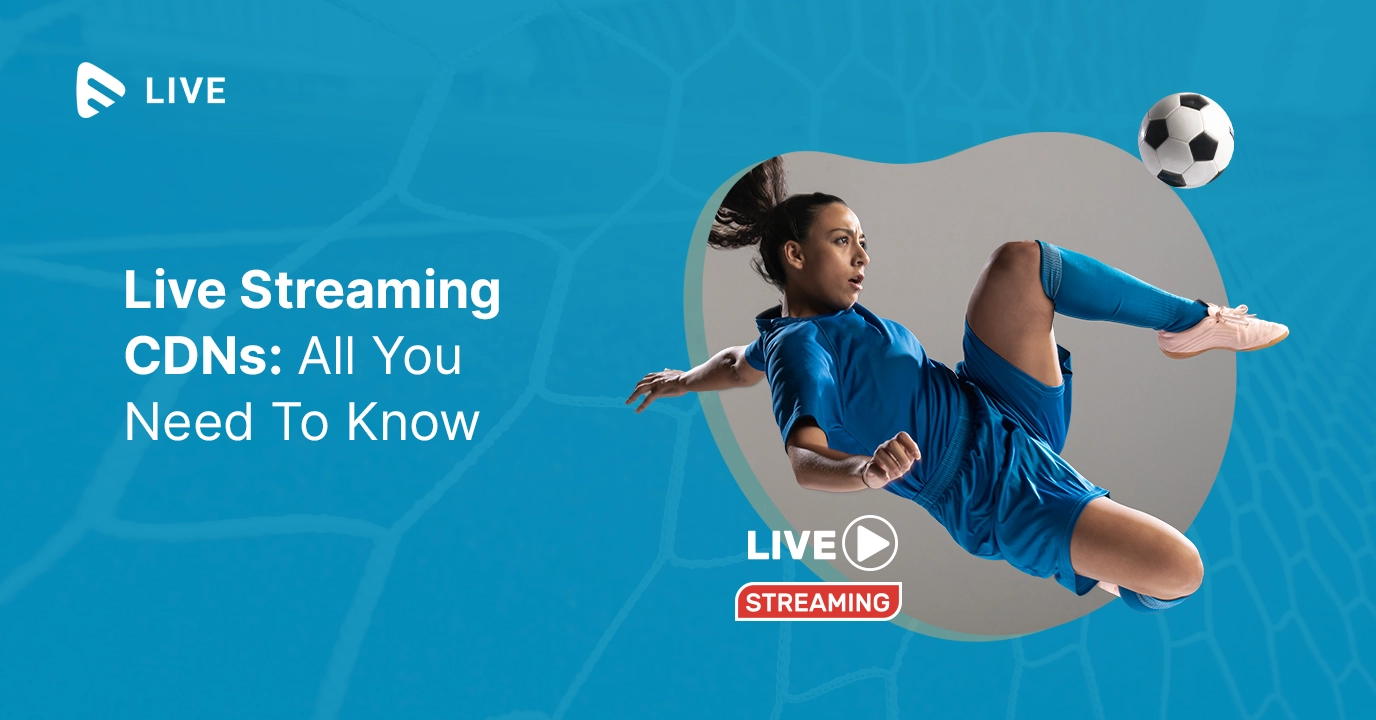















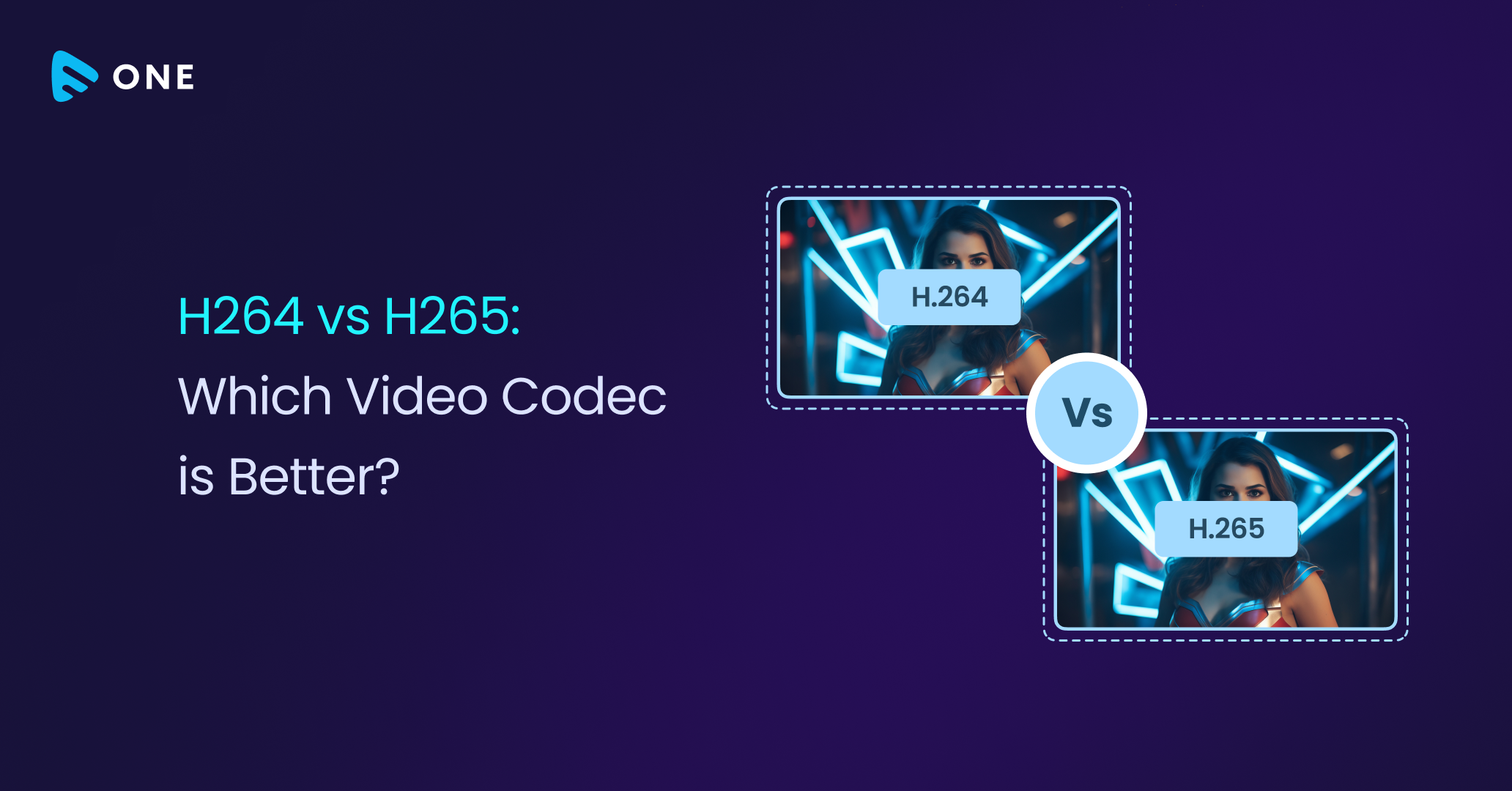




Add your comment